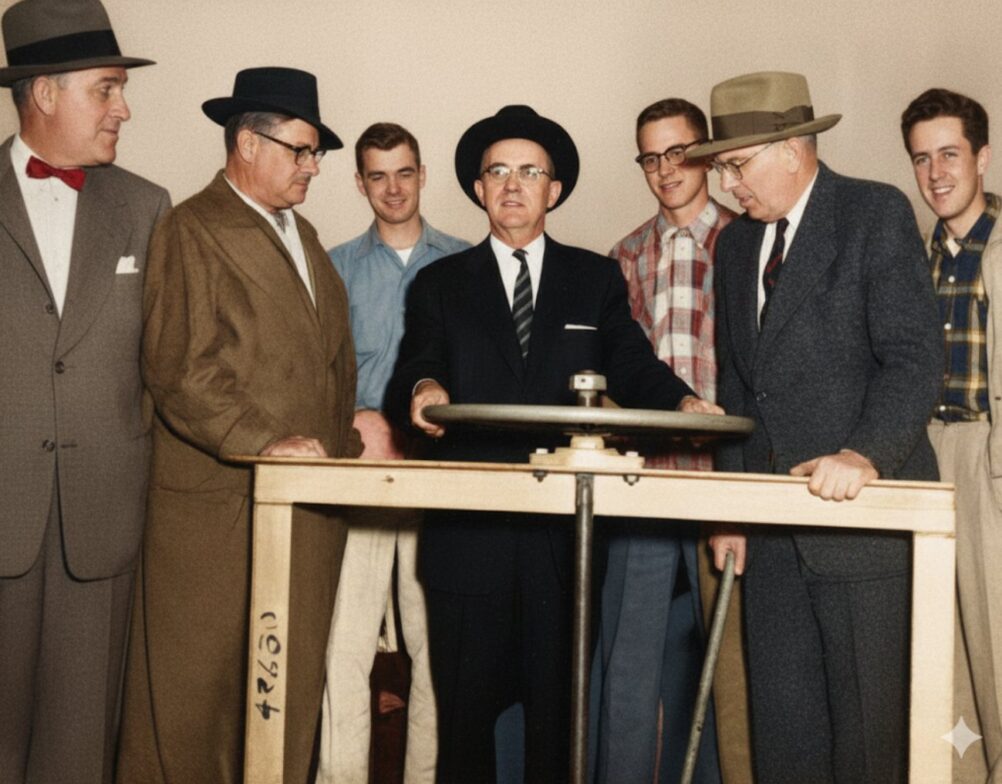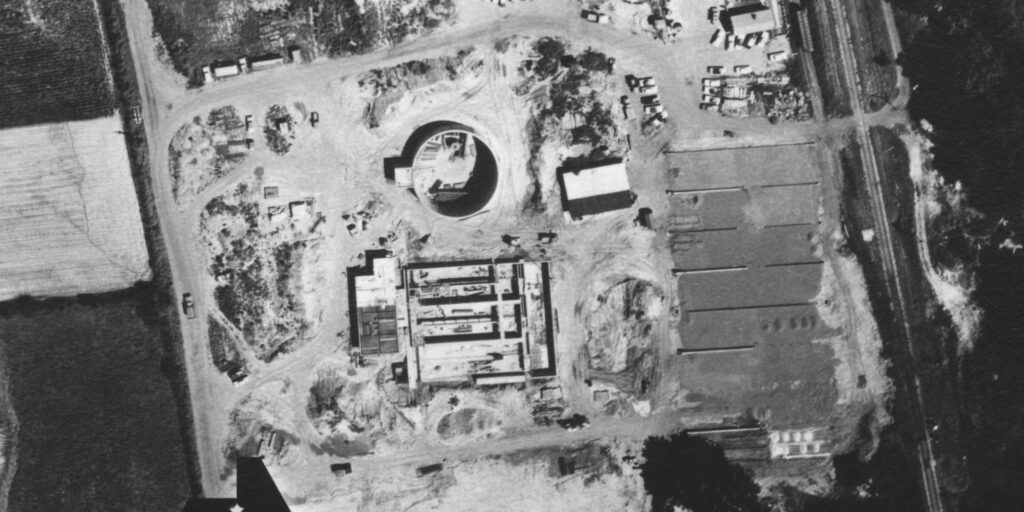Photo caption: “This is a part of an inspection group which looked over Owensboro’s $750,000 sewage treatment plant Tuesday near the river on Ewing Rd. City Manager E. M. Ford is handling a wheel that opens a sluice gate for storm water overflow. From the left, City Engineer Earl Patton; W. A. Johnson, member of the Sewer Commission; Ronald Riggs, contractor’s engineer; Ford; Richard E. Peacock, superintendent of the plant; Mayor Ben Hawes, and Johnny O’Brien, resident engineer for the designers. New plant may be in full operation by mid-April.”
Owensboro’s New Sewage Treatment Plant
Owensboro’s $750,000 sewage treatment plant underwent an official inspection led by Mayor Benjamin Hawes and City Manager E.M. Ford. Located between Ewing Road and the Ohio River near the Fleischmann Distillery, the plant was designed to process an average of 7.5 million gallons of sewage per day, with a capacity of up to 16 million gallons. Resident engineer John O’Brien guided the one-hour tour, which drew no complaints from inspectors.
Work on the sewage system had begun in 1956, and pump stations were already in operation while awaiting completion of the plant. The facility was scheduled to begin its first sewage processing tests the following week and to be fully operational by April 15, after contractors received a 51-day extension due to river flooding.
Incoming sewage entered through a 30-inch main, passed through a chopper, and then moved into three large settling tanks. Floating scum and settled sludge were routed to digesters for further treatment. Sediment was removed to eight open sand beds, and dried sludge was earmarked for sale as low-grade fertilizer or storage. Chlorine treated the sludge before and after digestion, and gases from the drying process were repurposed to fuel heaters in the main control building.
The plant’s central facility housed offices, pumps, air blowers, chlorination equipment, and electrical control panels. Its estimated annual electricity bill was $9,500. Financing came from a 100 percent surcharge on residents’ water bills, which doubled their monthly water charges to help repay sewage bonds.
The project was built by Markwell and Hartz of Memphis and designed by Johnson, Depp, and Quisenberry of Owensboro with Consoer, Townsend and Associates of Chicago.
This information was sourced from the MI, 2/26/1958.



